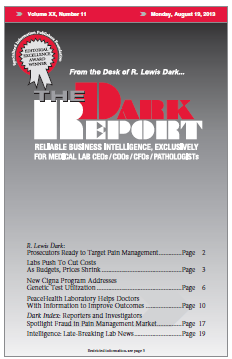PAIN MANAGEMENT IS COMING under increased scrutiny by law enforcement officials and government regulators. Even the national media have begun to notice the fraud and abuse that is rampant in this rapidly-expanding sector of healthcare. Many pathologists and clinical laboratory managers will welcome increased enforcement by state and federal officials. Over the past decade, lab …
Reporters & Investigators Target Fraud in Pain Management Market Read More »
To access this post, you must purchase The Dark Report.


